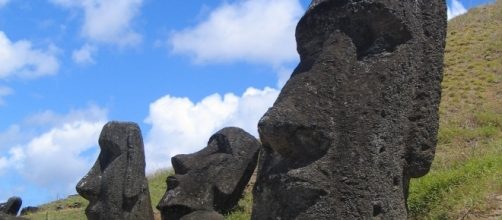Easter Island is known around the world for its famous Moai, the giant monolithic human figures carved long ago by the Rapa Nui people. Now, a team of archaeologists from the University of California, Los Angeles (UCLA) has been working on the island. Their "Easter Island Statue Project" began in 2009 to study the Moai and learn more about how they were created and about their creators. In the process, they discovered a long-forgotten secret about the Moai.
The Easter Island heads have hidden bodies
Small Easter Island, located in the tropical South Pacific Ocean directly west of the South American country of Chile, has long fascinated the world.
The team of archaeologists from UCLA have been looking into how to better study and preserving the Moai. Through their work with several of them, the archaeological team has excavated the statues to reveal their hidden bodies. Since the youngest Moai are over 500 years old, time had buried the bodies beneath layers of soil and rock.
During their nine year project on the island, the archaeologists documented and studied close to 1,000 Moai. The team did their best to try to determine the history, meaning, and function behind each statue that they studied. However, they only worked to reveal the statues bodies after getting all of the necessary approval.
During the excavation process of the bodies, it was discovered that there were etched petroglyphs on the backs of the figures.
These were usually crescent shaped to represent Polynesian canoes and was likely a symbol of the carver's family. Several human burial sites were also found near the statues, along with a large amount of red pigment. This led the team to speculate that the statues were painted red during burial ceremonies.
History behind the Moai
The Easter Island heads, which are called the Moai by the Rapa Nui people who carved them, were created between 1,100 and 1,500 A.D. from the stone on the island. The primary stone used to create the statues comes from volcanic tuffs made of basalt that were deposited from volcanic ash of the Rano Raraku volcano.
In fact, most of the statues are located along the Rano Rarku volcanic cone, which acted as a quarry for the Rapa Nui to build the Moai.
The average Moai is 13 feet (4 meters) tall and weighs about 14 tons, so the Rapa Nui used large tree trunks and ropes to lift and then keep the statues upright and in place. They would carve the heads and sides when the statue was on the ground and then do the back once it was standing upright.


